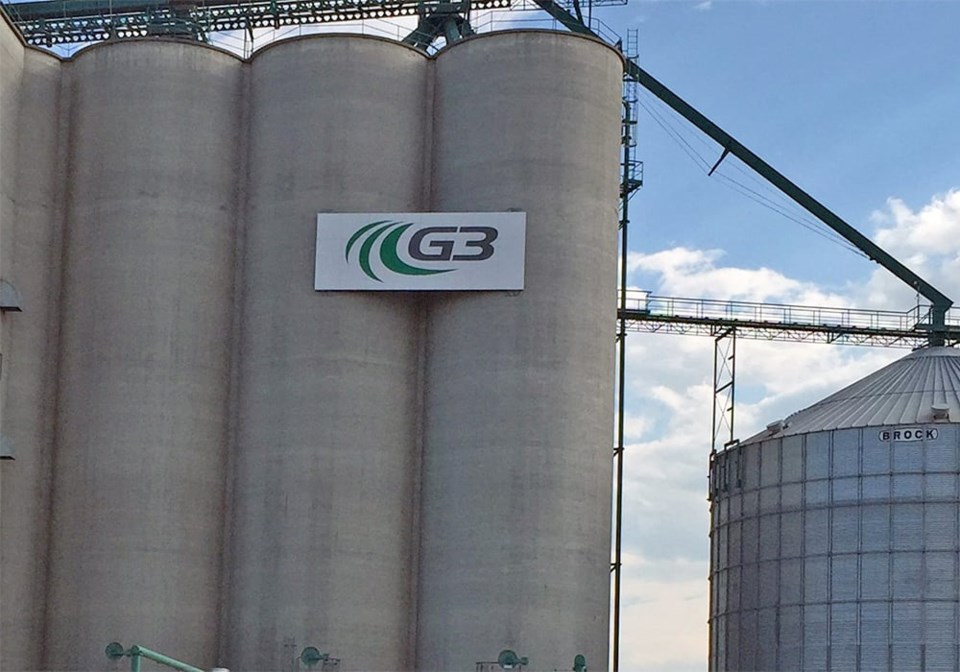SASKATOON — Farmers Equity Trust will not be one of the suitors for Bunge’s ownership stake in G3 Canada if the government forces the sale of those shares as part of its review of Bunge’s proposed takeover of Viterra.
“The trust has no cash resources to invest that way, and we’re not permitted under the trust to borrow money to invest,” said trustee David Carefoot.
The Canadian Wheat Board and the federal government formed Farmers Equity Trust as a way for farmers to have an economic interest in G3 Canada, the firm that succeeded the CWB.
Growers were given 499,000 Class B common shares in G3 upon its formation July 31, 2015. That gave them a 49.9 percent ownership stake in the new entity.
The remaining 50.1 percent of the firm’s common equity was controlled by G3 Global Holdings in the form of 501,000 Class A common shares.
G3 Global is 75 per cent owned by the Saudi Agricultural and Livestock Investment Company (SALIC) and 25 per cent by Bunge.
The trust’s shares were valued at $210.2 million on Jan. 31, 2016, once all the closing adjustments were finalized.
Its percentage ownership of G3 has since been watered down due to continued investment by SALIC and Bunge.
“As they invest more money they get issued more (Class A) shares, which dilutes our interest from where it was at the outset,” said Carefoot.
“All that really means is we have a smaller percentage of a much larger company.”
The trust holds the shares on behalf of producers and issues trust units to eligible farmers.
Those units were initially doled out based on how much grain a farmer delivered to CWB from Aug. 1, 2013, to when G3 was formed July 31, 2015.
Units will continue to be issued until “full allocation” is achieved, which means the total value of those units equals $210.2 million.
Carefoot estimates about 80 per cent of the available trust units have either been doled out or are being held in reserve for growers who delivered grain over the past 10 years but failed to complete an eligibility certificate.
The certificate simply states that the person is a farmer who lives in Western Canada and is not tax exempt.
He estimates that 25,000 farmers have either received units or have them held in reserve by the trust.
There are by far more issued units than reserved units, but the reserved amount is much higher than the trust wants.
The trust contacts farmers every year attempting to have them convert their reserved units into issued units.
Carefoot said some growers are worried about the tax implications of holding the trust units. However, he stressed that there are no tax implications until the units are redeemed.
He said growers should think of the units as a bonus for delivering their grain to G3. There is no cost to acquiring them, and completing an eligibility certificate is a simple process.
Farmers can redeem their trust units at age 75, provided they have held them for a minimum of three years. Units are also redeemable by the estate in the event of the death of a unit holder.
Units that are redeemed are no longer available for dispersal.
Kim McConnell, who is another of the four trustees responsible for stewarding the trust, said the federal government initially provided the trust with $10 million to assist with the redemption process.
“The government seemed to forget at the time that we had to pay tax, so we lost 50 per cent of that money right off the bat,” he said.
Carefoot said redemptions have been “relatively modest,” so there is still some cash to service those requests.
If the trust ran out of money, it could offer promissory notes to farmers in the hopes that new funds could eventually become available through a dividend paid by G3 to all shareholders of the company.
However, it is impossible for the trustees to know if or when that would happen.
“G3 Canada is still growing, and they’re still investing in their own business,” he said.
In the meantime, the available trust units are quickly disappearing, largely because of G3’s aggressive expansion efforts. More elevators mean more tonnes being delivered and more trust units being doled out.
Carefoot thinks all the units could be spoken for in the next couple of years.
Units cannot be traded because G3 is a private company, not a public one. There is no real commercial mechanism for valuing the units. The best benchmark is the original book value of $210.2 million.
The only way farmers can cash in that value is by selling all their Class B shares to the other two owners of the business — SALIC and Bunge.
That was not allowed for the first seven years of G3’s existence, but it can happen now.
The process would have to be initiated by SALIC and Bunge, but that has not yet occurred.
If a third party expressed interest in the shares held by Farmers Equity Trust, SALIC and Bunge would have the right of first refusal.
There are also tag-along rights, which means if a third party were to acquire all the Class A shares in the company, they would also have to acquire the Class B shares held by the trust.




